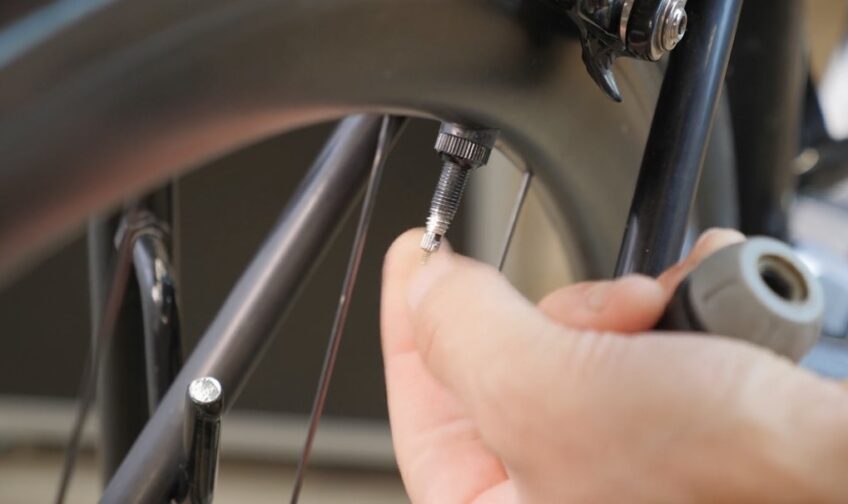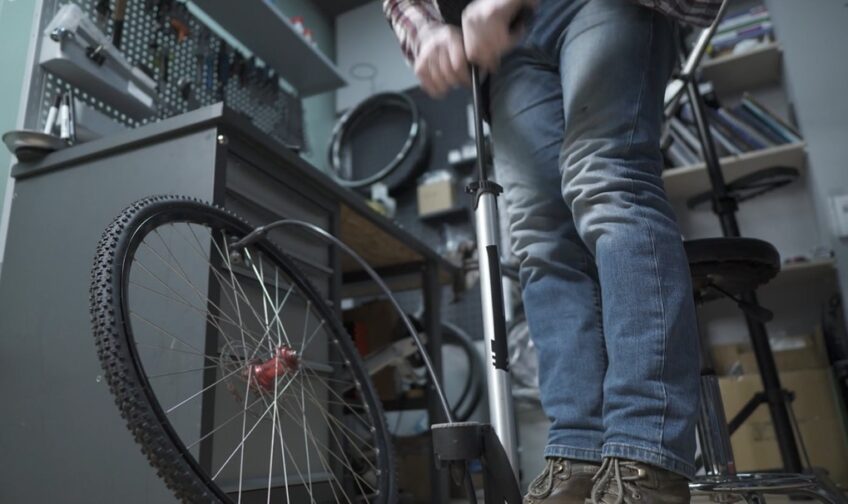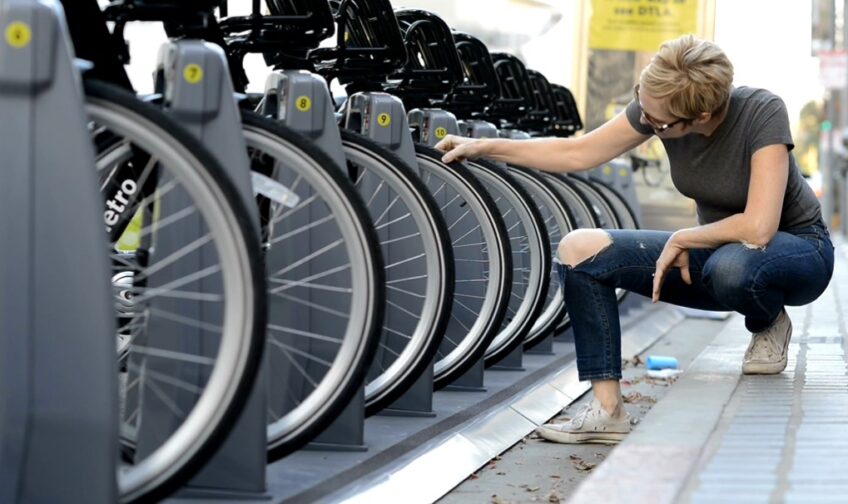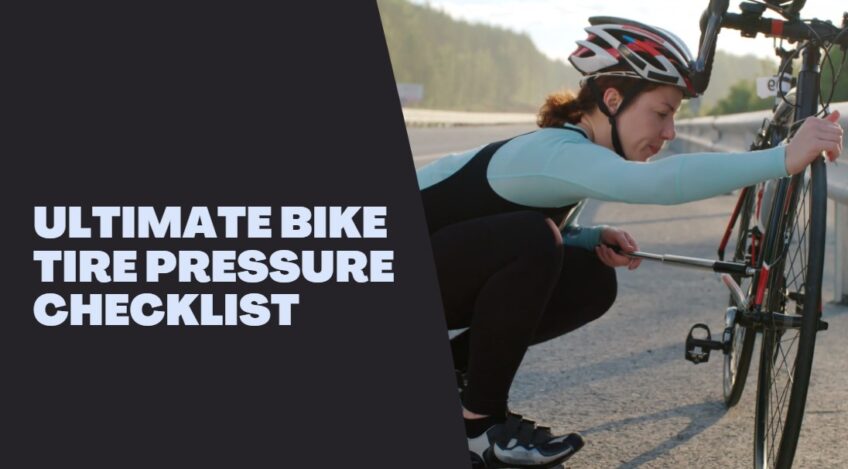Bicycles are a fantastic way to exercise, commute, and explore the outdoors. However, to ensure the best cycling experience, it’s essential to keep your bike’s tires properly inflated. Tire pressure affects a bike’s performance, including handling, speed, and comfort.
If it is too low, it can result in sluggish rides and an increased likelihood of flats, while high pressure can make for uncomfortable and unstable rides. Therefore, checking your bike’s tire pressure regularly is crucial. Here’s how you can do it:
Gather Necessary Tools and Equipment

Before checking your bike’s tire pressure, you’ll need to gather a few essential tools and equipment. These include a bicycle pump, tire gauge, and valve adapter. A bicycle pump is a primary tool for inflating your tires, and it comes in different types, including floor pumps, hand pumps, and CO2 pumps.
A tire gauge is essential for measuring tire pressure accurately, and it can be digital or analog. Lastly, a valve adapter is necessary if your bike’s valve is different from the pump’s nozzle.
Determine Your Bike’s Tire Pressure Range
The ideal tire pressure for your bike depends on several factors, including the tire size, rider weight, and riding conditions. You can find the recommended pressure range on the tire’s sidewall or in the bike’s owner’s manual.
It is usually expressed in pounds per square inch (PSI) or bar units. Make sure to adhere to the recommended tire pressure range for optimum performance and safety.
Locate the Tire Valve

The tire valve is the point of entry for inflating your bike’s tires. It’s usually located on the wheel rim, and it can be of different types, including Presta and Schrader valves. The Presta valve is slender and features a lock nut that you’ll need to unscrew before inflating the tire.
On the other hand, the Schrader valve is wider and resembles the valves used in car tires. You can identify the valve type by looking at its shape, size, and outer threads.
Check the Current Tire Pressure
To check your bike’s tire pressure, first remove the valve cap and attach the tire gauge to the valve. Press the gauge onto the valve stem until the hissing sound stops, indicating that you’ve established a seal.
The gauge will display the tire pressure in PSI or bar units. Compare the reading to the recommended tire pressure range, and if it’s too low or high, adjust it accordingly.
Inflate the Tires

To inflate your bike’s tires, attach the pump nozzle to the valve, ensuring that it fits snugly. If you’re using a Presta valve, make sure to unscrew the lock nut before inflating the tire. Pump the tire until it reaches the recommended tire pressure range.
Use the tire gauge to check the pressure periodically, and stop inflating once it reaches the desired level. If you overinflate the tire, use the tire gauge to release some air until you reach the recommended pressure range.
Replace the Valve Cap
After inflating your bike’s tires, replace the valve cap to prevent dust, dirt, and moisture from entering the valve. The valve cap also helps to maintain the valve’s integrity and prevents air from escaping. Make sure to screw the cap tightly but not too tight to prevent damage to the valve threads.
Additional Tips
Here are some extra tips to help you check your bike’s tire pressure effectively:
- Check the pressure before each ride or at least once a week. Changes in temperature, humidity, and altitude can affect it, so it’s essential to check it regularly.
- Use the correct pump for your bike’s valve type. If you’re using a Presta valve, make sure to use a pump with a compatible head.
- When inflating your bike’s tires, make sure to stand the bike upright and check the tire pressure while the bike is not in motion.
- Don’t rely on visual inspection to determine tire pressure. The tires can appear adequately inflated, but they may not have the proper pressure.
- Avoid overinflating your bike’s tires, as this can make the ride uncomfortable and reduce traction.
- If you’re not sure about the recommended tire pressure for your bike, consult the bike’s owner’s manual or ask your local bike shop for assistance.
Frequently Asked Questions

1. How often should I check my bike’s tire pressure?
It’s recommended that you check it before each ride or at least once a week. This is important since environmental aspects can affect tire pressure.
2. How do I know the recommended tire pressure for my bike?
You can find the recommended tire pressure range on the tire’s sidewall or in the bike’s owner’s manual. The pressure is usually expressed in pounds per square inch (PSI) or bar units.
3. What happens if I ride with low tire pressure?
Riding with low tire pressure can result in sluggish rides and an increased likelihood of flats. It can also damage the tire and rim, leading to costly repairs.
4. What happens if I ride with high tire pressure?
Riding in such circumstances can make for uncomfortable and unstable rides. It can also reduce traction and increase the likelihood of losing control of the bike.
5. Can I use a pump with a Presta valve head for a Schrader valve?
No, you cannot. It is important to ensure that you use the correct pump for your bike’s valve type.
6. Can I check pressure without a tire gauge?
No, you cannot accurately check it without a tire gauge. Visual inspection is not reliable, and overinflating or underinflating the tire can lead to safety issues.
7. Can I overinflate my bike’s tires?
Yes, it is possible, and it can make the ride uncomfortable and reduce traction. It can also lead to a higher likelihood of flats due to the increased pressure on the tire.
8. What should I do if I’m not sure about the recommended pressure for my bike?
If you’re not sure about it, you should consult the bike’s owner’s manual or ask your local bike shop for assistance. They can help you determine the appropriate pressure range for your bike based on its tire size, rider weight, and riding conditions.

9. Can I ride with different tire pressure on the front and rear tires?
It’s not recommended to do this, as it can lead to instability and reduced handling. Make sure to inflate both tires to the recommended pressure range.
10. Do I need to replace the valve cap after checking the pressure?
Yes, and this is an absolute must. The valve cap prevents dust, dirt, and moisture from entering the valve, maintains the valve’s integrity, and prevents air from escaping. Make sure to screw the cap tightly but not too tight to prevent damage to the valve threads.
Final Words
Checking your bike’s tire pressure is a simple task that can have a significant impact on your cycling experience. Properly inflated tires provide better performance, stability, and comfort while also reducing the likelihood of flats.
By following the steps outlined above, you can check your bike’s tire pressure effectively and ensure that your rides are smooth and enjoyable. Remember to check the pressure regularly, use the correct pump and valve adapter, and adhere to the recommended tire pressure range for optimal performance and safety.
We recently published an article about how to clip in and out of SPD pedals, so make sure to check it out, as it is packed with plenty of useful information you will certainly find interesting.

